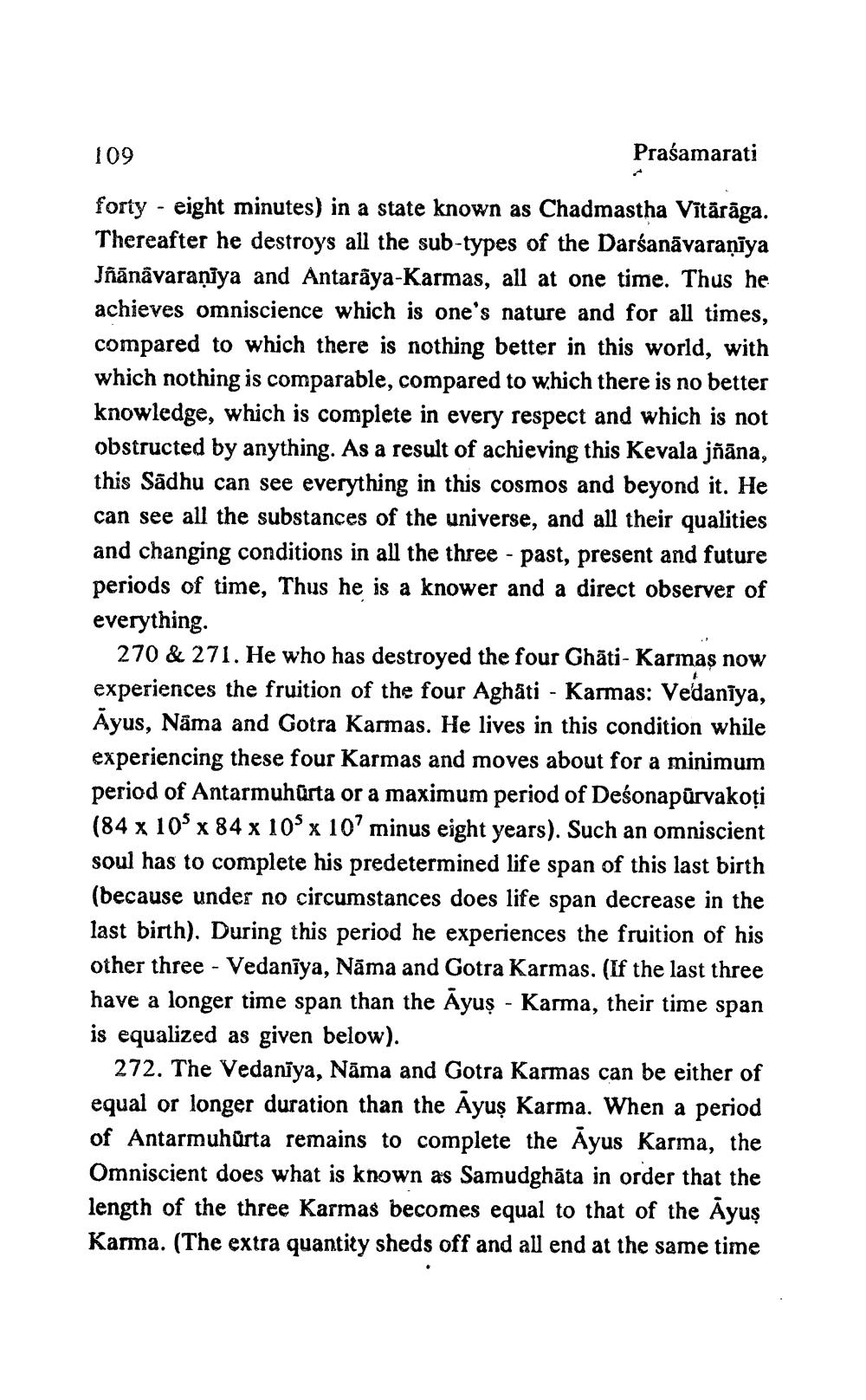________________
109
Praśamarati forty-eight minutes) in a state known as Chadmastha Vītārāga. Thereafter he destroys all the sub-types of the Darśanāvaraṇīya Jñānâvaraniya and Antarāya-Karmas, all at one time. Thus he achieves omniscience which is one's nature and for all times, compared to which there is nothing better in this world, with which nothing is comparable, compared to which there is no better knowledge, which is complete in every respect and which is not obstructed by anything. As a result of achieving this Kevala jñāna, this Sādhu can see everything in this cosmos and beyond it. He can see all the substances of the universe, and all their qualities and changing conditions in all the three - past, present and future periods of time, Thus he is a knower and a direct observer of everything
270 & 271. He who has destroyed the four Ghāti- Karmas now experiences the fruition of the four Aghāti - Karmas: Vedanīya, Āyus, Nāma and Gotra Karmas. He lives in this condition while experiencing these four Karmas and moves about for a minimum period of Antarmuharta or a maximum period of Deśonapūrvakoți (84 x 10x 84 x 109 x 107 minus eight years). Such an omniscient soul has to complete his predetermined life span of this last birth (because under no circumstances does life span decrease in the last birth). During this period he experiences the fruition of his other three - Vedaniya, Nāma and Gotra Karmas. (If the last three have a longer time span than the Ayuş - Karma, their time span is equalized as given below).
272. The Vedaniya, Nāma and Gotra Karmas can be either of equal or longer duration than the Ayuş Karma. When a period of Antarmuhurta remains to complete the Ayus Karma, the Omniscient does what is known as Samudghāta in order that the length of the three Karmas becomes equal to that of the Ayus Karma. (The extra quantity sheds off and all end at the same time




